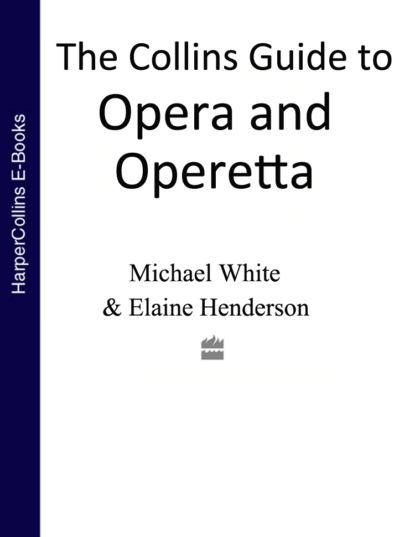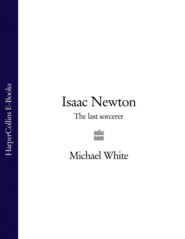По всем вопросам обращайтесь на: info@litportal.ru
(©) 2003-2024.
✖
The Collins Guide To Opera And Operetta
Автор
Год написания книги
2018
Настройки чтения
Размер шрифта
Высота строк
Поля
Highlight
This is not an opera with stand-alone arias, and there are, after all, only two singing characters: the dead wives behind the sixth door are mute. But there is a great musical climax at the fifth door when the vision of Bluebeard’s kingdom floods the stage – a heart-stopping moment that never fails in its effect.
Did You Know?
Bartók wrote this grim tale of domestic serial killing shortly after his marriage. He dedicated the score to his wife.
Recommended Recording
Samuel Ramey, Eva Marton, Hungarian State Orchestra/Adam Fischer. Sony MK 44523. Idiomatically conducted, with explosively strong performances from the two singers.
Ludwig van Beethoven (#ulink_6300e416-0213-5c89-b262-42f0dc693988)
(1770–1827)
Fidelio (1805)
Born in Bonn but living and working in Vienna from his early twenties, Beethoven is one of the towering, pivotal figures of music history, with a massive output (nine symphonies, thirty-two piano sonatas, sixteen string quartets, seven concertos …). His work carried the Classical forms of Haydn and Mozart into the new territory of Romanticism and confirmed the potential of music to speak in spiritual as well as political terms. A radical humanitarian with revolutionary sympathies, he used his work as a public platform for the expression of personal beliefs about society and the individual, and his only opera Fidelio was exactly that: a statement of the power of the human spirit to triumph over tyranny and oppression which stands beside the choral finale of Beethoven’s Ninth Symphony as an anthem to the ideals of universal brotherhood. Other scores express a more autobiographical struggle with human weakness: at the age of thirty he began to realise that he was going deaf, and as his hearing worsened he withdrew into a world of inner turmoil which found a mystical dimension in the late quartets.
Fidelio (#ulink_a9307626-41f6-5c5c-8650-c32677794681)
FORM: Opera in two acts; in German
COMPOSER: Ludwig van Beethoven (1770–1827)
LIBRETTO: Joseph Sonnleithner and Georg Friedrich Treitschke; after the play by Jean-Nicolas Bouilly
FIRST PERFORMANCE: Vienna, 20 November 1805
Principal Characters
Florestan, a Spanish nobleman
Tenor
Leonore, his wife, disguised as the male Fidelio
Soprano
Rocco, chief jailer
Bass
Marzelline, Rocco’s daughter
Soprano
Jaquino, Rocco’s assistant
Tenor
Don Pizarro, governor of the prison
Bass-baritone
Don Fernando, the king’s minister
Bass
Synopsis of the Plot
Setting: A fortress near Seville; 18th century
ACT I Florestan, a political prisoner and freedom fighter, has been flung into a dungeon by Pizarro and is slowly starving to death, while Pizarro spreads rumours that he has already died. Leonore, suspecting the truth, has disguised herself as a man, Fidelio, and has been taken on as an assistant by Rocco, swiftly becoming a trusted aide. Marzelline, Rocco’s daughter, is unaware of the disguise and has taken a considerable fancy to Fidelio, rejecting the overtures of Jaquino, her jealous former suitor. Leonore learns that Don Fernando, the king’s minister, is coming to inspect the prison, having heard that Pizarro is unlawfully locking up his own personal enemies. To Leonore’s horror, Pizarro gives Rocco money and instructs him to kill Florestan. Rocco declines to commit murder, but agrees to dig a grave in the prison dungeon if Pizarro will do the deed himself. Meanwhile Leonore has urged Rocco to allow the prisoners out for some light and air, but she is heartbroken to find Florestan is not among them. Rocco then tells her that she is to help with the gravedigging so at least she will be able to see Florestan and perhaps be able to help him; if nothing else she will die with him.
ACT II Rocco and Leonore enter the dungeon where Leonore is shocked to see her emaciated and chained husband, although she is careful to control her behaviour to avoid rousing Rocco’s suspicions. Leonore persuades Rocco to allow her to offer the condemned prisoner some bread and wine. Suddenly Pizarro bursts in, dagger in hand, and rushes towards Florestan – only to be stopped by Leonore who throws herself between them, declaring that she will shoot Pizarro, with a pistol she has kept hidden, before he kills Florestan. At this moment a fanfare is heard and Jaquino announces the minister’s arrival. Florestan is saved and, in a symbolic gesture, he is released from his chains by Leonore. The minister orders the immediate release of all the prisoners and the arrest of Pizarro. Justice is done.
Music and Background
Fidelio is a mixture of music and speech which can prove upliftingly sublime or stodgily leaden, depending on how it’s done and (critically) how much of the speech is left in. Beethoven had no previous experience of writing opera, and he took enormous trouble over it, passing through three different versions, a different name (Leonore) and four overtures before arriving at a final form. You could argue that the effort shows. There is also an uncomfortable relationship between the domestic and heroic elements in the opera, and a sense in which the great but static chorus of celebration at the end takes the whole thing out of the realms of theatre and into oratorio. But there is no denying the sincere depth of emotion involved, or the fact that Fidelio can be an exhilarating and radiantly affirmative experience – in the right hands.
Highlights
The canonic quartet ‘Mir ist so wunderbar’, Leonore’s aria ‘Komm, Hoffnung’, and the prisoners’ chorus ‘O welche Lust’ in Act I; the Leonore/Florestan duet ‘O namenlose Freude!’ and final chorus ‘Wer ein holdes Weib errungen’ in Act II.
Did You Know?
Fidelio’s subtitle is Die Eheliche Liebe (Married Love), and Leonore is very much the idealised woman Beethoven spent his life searching for but never finding. She also represents a comparatively rare example in opera of the female lead as active heroine rather than passive victim.
Fidelio is said to have been based on a true incident in the French Revolution.
Recommended Recording
Christa Ludwig, Jon Vickers, Philharmonia Orchestra/Otto Klemperer. EMI CMS7 69324-2. A classic 1962 recording with a warmth and dynamism that remain unmatched.
Vincenzo Bellini (#ulink_2bca3db5-e27b-53fb-99bf-9f461d931755)
(1801–35)
I Capuleti e I Montecchi (1830)
La Sonnambula (1831)
Norma (1831)
Beatrice di Tenda (1833)
I Puritani (1835)









